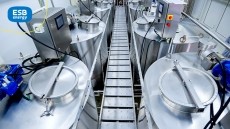Food manufacturers focus on carbon footprinting

Retailers are focusing on monitoring carbon emissions inherent in producing and selling their own-label products, Stanley told FoodManufacture.co.uk. But he added: “They find lifecycle analysis very time consuming and there are practical issues. If you put 70g of carbon on the packet, it could be 65–75g depending on where it has travelled from.
“They [retailers] are not stopping carbon footprinting. It will continue to determine product design for own label products. They have got more control over their own brands.”
Unilever and Burger King
However, Stanley, whose previous posts included factory manager at Unilever and supply chain director at Burger King, said the priority retailers gave to sustainability varied widely. “Some retailers will take it into account in their buying decisions,"he said. However, others – even those that claimed high environmental standards – sometimes treat aspects such as carbon footprinting as an afterthought.
BFF is working with the Department for Environment, Food and Rural Affairs on a sustainability roadmap for the soft drinks industry. It will consider the environmental impact of each stage of the supply chain. “We are considering five things: energy; carbon; water; waste; and scarce materials,” said Stanley, who joined BFF last month.
“All these things can be quantified. We can measure a current baseline and how businesses are improving.”
The project will continue over the course of this year.
Carbon emissions
Demand for measuring the carbon emissions produced throughout the supply chain lifecycle of a product, from raw material sourcing to its sale to consumers, continued to rise, said Stanley. “Also, people want to calculate other data, such as water and waste. Water is very much a growing area. I did some work last year with a very large vegetable producer that started looking at the water footprint of its products.”
Work with brewers suggested more water was used in growing the hops and barley for beer than in later processing, he said.
Part of the motivation behind measuring sustainability was the desire to reduce risk in the supply chain by increasing the security, while reducing complexity and cost of supply, said Stanley. “Businesses have to reduce their exposure to risk.”
As the concept of sustainability had progressed, it had increasingly become about reducing costs and maintaining and enhancing company reputation in the marketplace, he said.



















